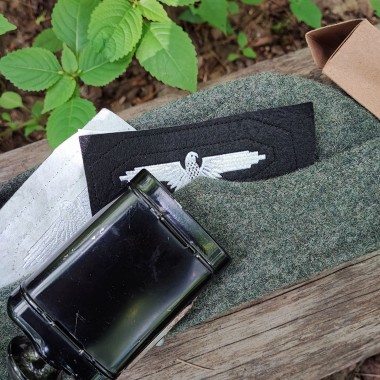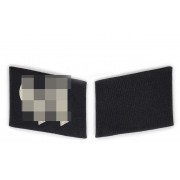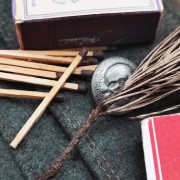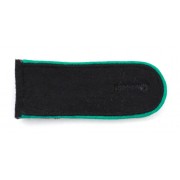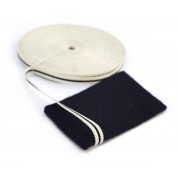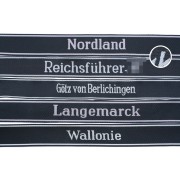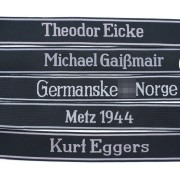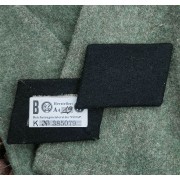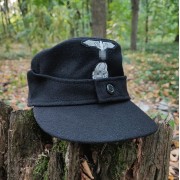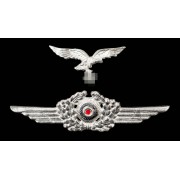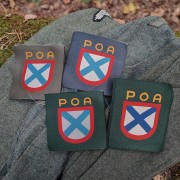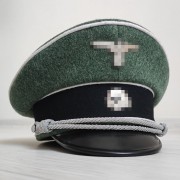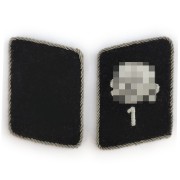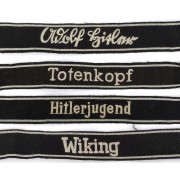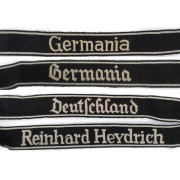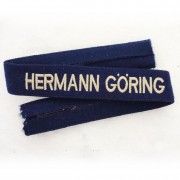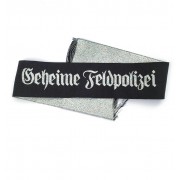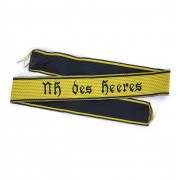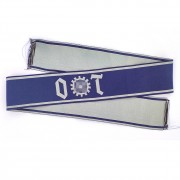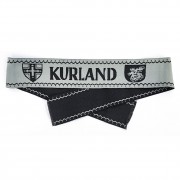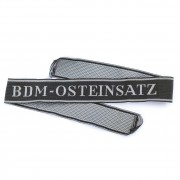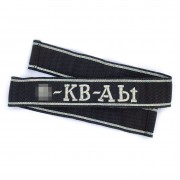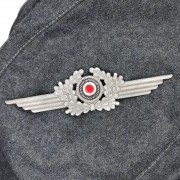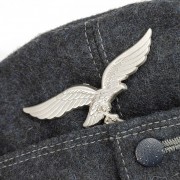Description
This product is intended for military-historical reenactment (immersive stydy of history); for creating costumes for theatrical and film, video plays condemning Nazism and fascism; as well as for exhibiting in museums of military history. This product is not propaganda of ideas and criminals convicted by an International Military Tribunal, and should not be used for such a purpose! The photos have been edited in accordance with the requirements of the law.
If you need additional photos of the product, write to us by email or in the messenger.
We offer high-quality patches made exclusively for our store. These insignia correspond to the originals, have a smooth geometry and fine details. To see additional photos please follow the link.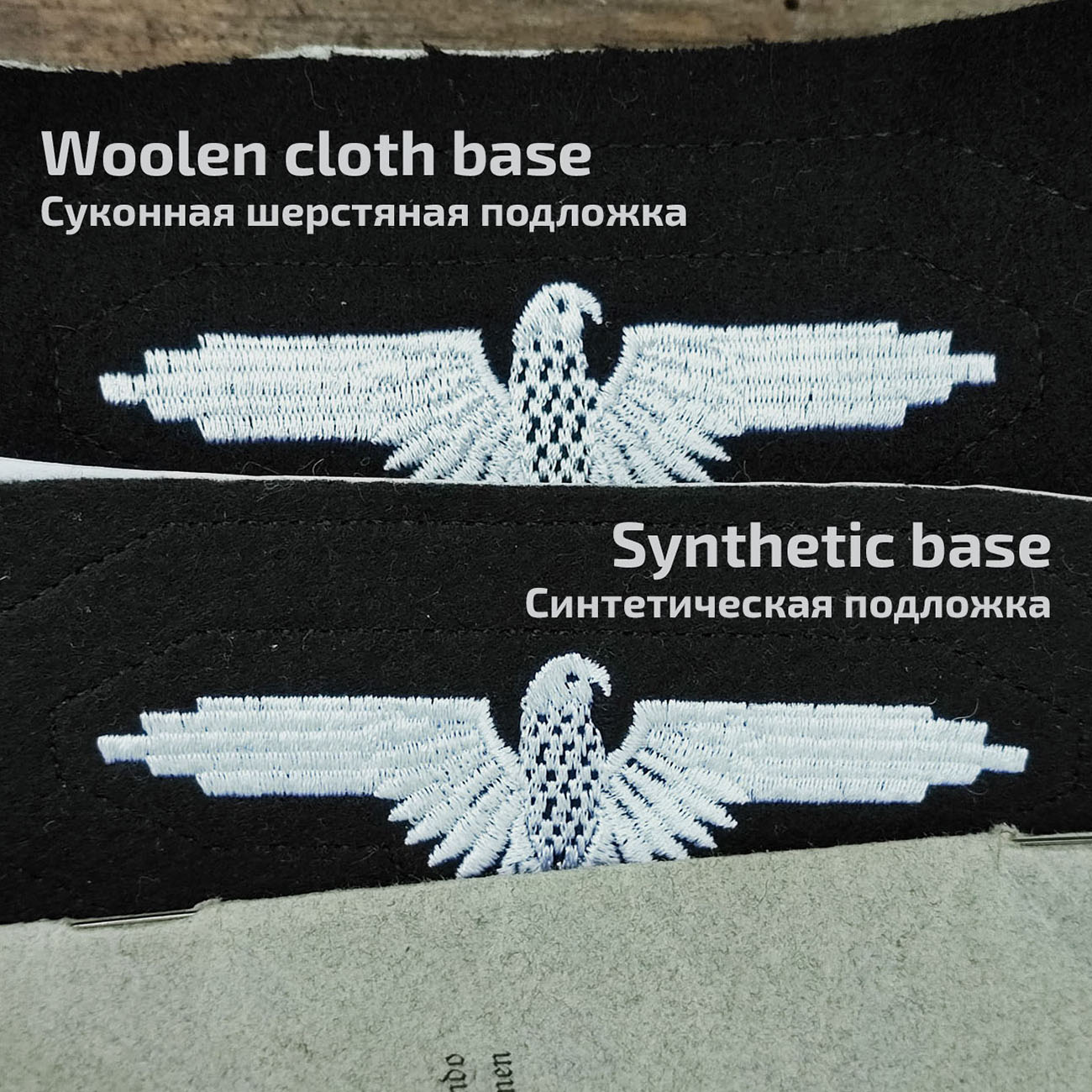
How to sew the patch?
Fix the patch on the left sleeve of the field jacket so it was about 15 cm from the top seam (where the shoulder strap) to the upper edge of the patch. You can fix it with a bright thread (which you can then remove) or glue. When the patch sits smoothly and beautifully, start sewing. Use a black thread, sew over the edge. Before the war, the uniform of the SS units was supplied without insignias, and the soldiers sewed it themselves or resorted to the help of tailors. During the war, the insignias were sewn on a sewing machine at the factory.
How to age the patch?
To give the patch a more "aged" dirty-white color, use a liquid diluted paint (preferably acrylic or oil, but in negligible quantities that are needed for this purpose, any, even watercolor, will do). Color: a mixture of yellow and black (a dirty yellow color should turn out), you can add just a little red to make the color of the slurry more earthy. It should be tinted water, not paint. Paint the patch with this liquid. From the first time, the result may not be noticeable. Dry and repeat the desired number of times. Don't overdo it!
Historical reference.
Eagles for the SS were made using BeVo (jacquard) technology or machine embroidery. The first one allowed to get more accurate details, the second one did not require complex equipment and allowed to make smaller runs at a time. There was no system in the use of varieties, however, BeVo patches were more common at the beginning of the war.
The sample we copied was made by machine embroidery. Often such eagles are found on the M44 uniform in the "Dot" (Erbsentarn) camouflage. There are quite a few varieties of embroidered eagle, even sewn after the same scheme, they differ in small details (the shape of the head, beak, small details on the embroidery). In addition, there are embroidered eagles made after other schemes (patterns).
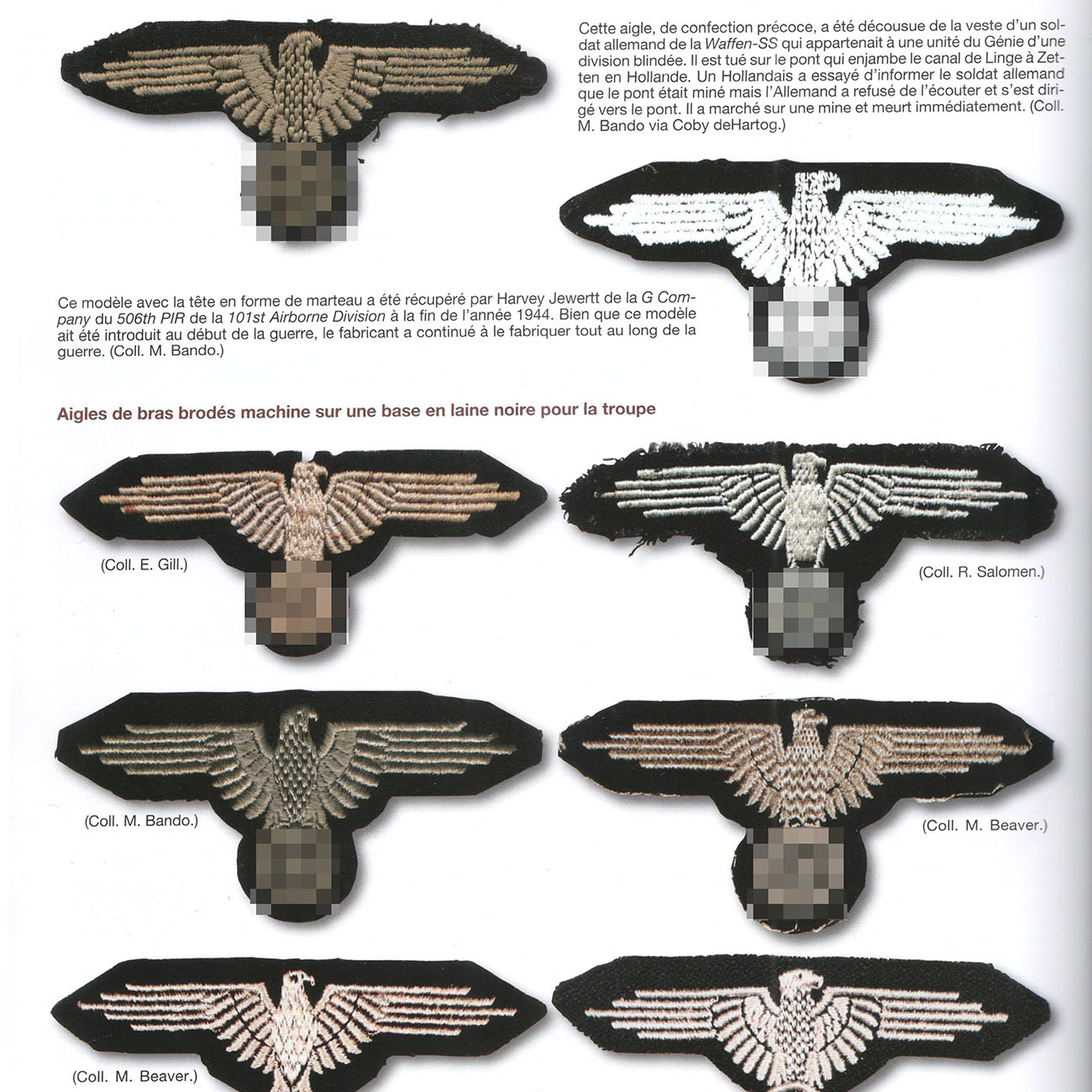
An illustration from Mark Bando's book "War Trophies" ("Prises de guerre") page 170 by Heimdal publishing house, dedicated to the trophies that American soldiers brought from the German Western Front and which later settled in thematic collections. A good selection of embroidered SS eagles is shown, the second from the bottom in the left row is the sample that we copied.










